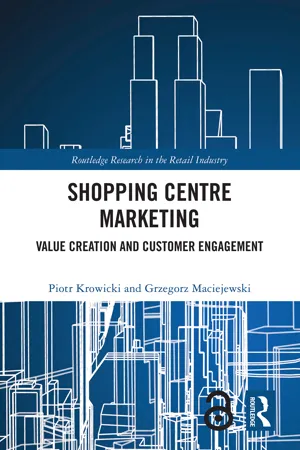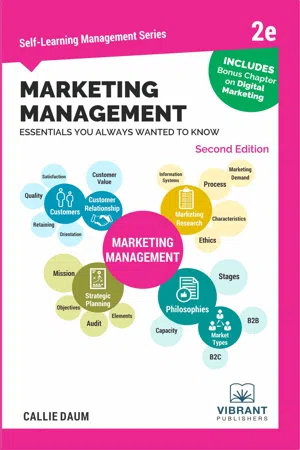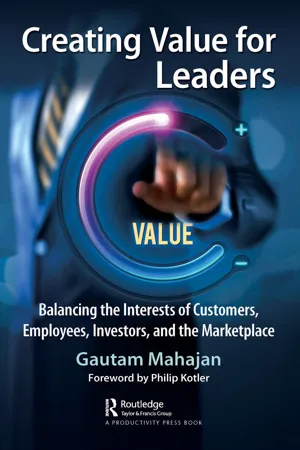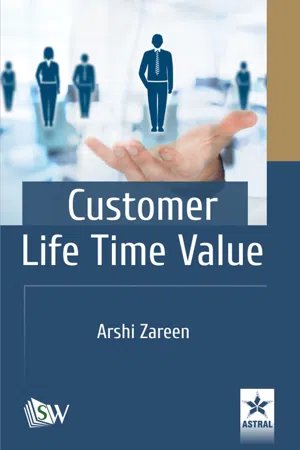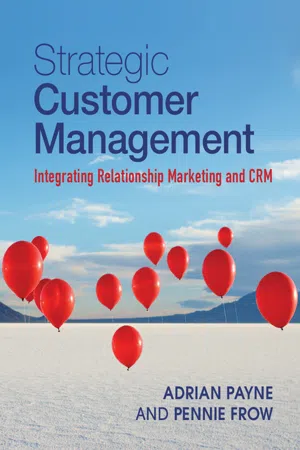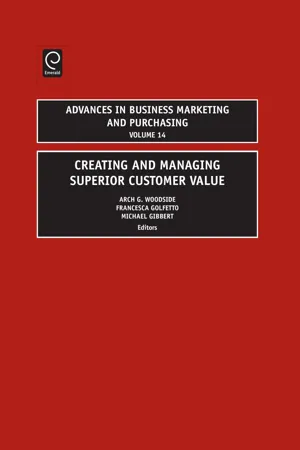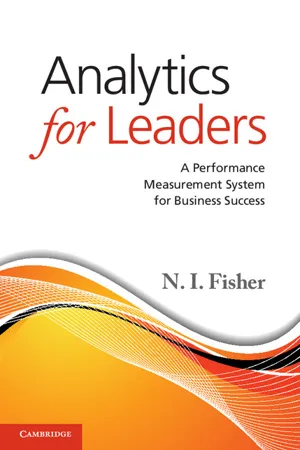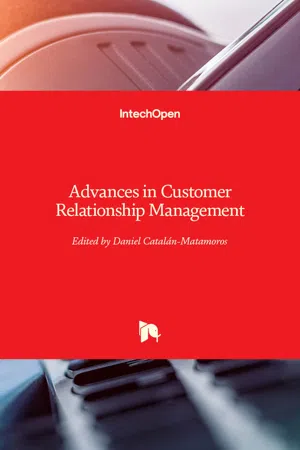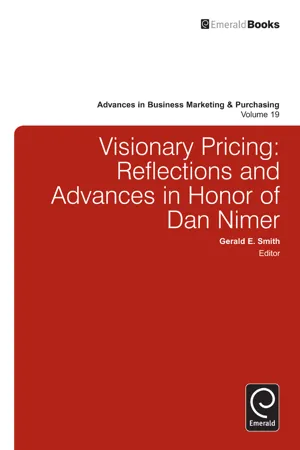Marketing
Customer Value
Customer value refers to the perceived benefits that a customer receives from a product or service in relation to the cost incurred. It encompasses the overall satisfaction, utility, and worth that a customer derives from their purchase. Understanding and delivering customer value is essential for businesses to attract and retain customers, and to differentiate themselves in the market.
Written by Perlego with AI-assistance
Related key terms
1 of 5
11 Key excerpts on "Customer Value"
- eBook - ePub
Shopping Centre Marketing
Value Creation and Customer Engagement
- Piotr Krowicki, Grzegorz Maciejewski(Authors)
- 2024(Publication Date)
- Routledge(Publisher)
Doligalski, 2013 ). Some researchers pay attention to the satisfaction aspect alone, while others refer to the cost of obtaining that satisfaction. The term ‘Customer Value’ is variously defined, and conceptualising PCV poses difficulties, both in academia and in practice. Definitions of the Customer Value concept can be divided into three different groups. The first relates to the treatment of value as a phenomenological construct – co-created by the customer, where not only product attributes are emphasised, but also feelings and perception of product attributes (e.g. definitions by S.L. Vargo and R.F. Lush, M. Szymura-Tyc). In the second, value is viewed as a net benefit, the result of the recipient’s perceived benefits and costs; in the third group of definitions, it is captured in the context of the goals (needs) that the recipient realises as a result of acquiring or using the product, according to the MEC concept, as already described.An important definition of Customer Value is given by A. Ravald and Ch. Grönroos, who look at the term through the lens of the relationship between the company and its customer (Pabian, 2020 ). According to the researchers, Customer Value is not created solely by the organisation, and the customer plays the role of co-creator of value. This is because much depends on the attitude of the customer, who can raise or lower the value of a given product (Chlipała, 2011 ). In some definitions of the ‘Customer Value’ concept, benefits are juxtaposed along with costs. Some researchers believe that this juxtaposition should be a difference, while others believe that it takes the form of a ratio. In Table 2.6 , we present the definitions of Customer Value.Table 2.6Definitions of Customer Value found in the literatureAuthorDateDefinition of the termK.B. Monroe 1990 The ratio of perceived benefits relative to perceived sacrifice. D.R. Lichtenstein et al. 1990 A concern for price paid relative to quality received. B. Gale 1994 Customer Value was market perceived quality which customers obtained relative to product price. Ph. Kotler 1994 Customer Value was the difference between the value obtained from a product of customer possession and the cost paid in order to getting the product. H.E. Butz, L.D. Goodstein 1996 Emotional bond established between a customer and a producer after the customer has used a salient product or service produced by that supplier and found the product to provide an added value. A. Ravald, Ch. Grönroos - eBook - ePub
Managing Market Relationships
Methodological and Empirical Insights
- Adam Lindgreen(Author)
- 2017(Publication Date)
- Routledge(Publisher)
31- Total Customer Value: the bundle of benefits that customers expect from a given good or service.
- Total customer cost: the bundle of costs that customers expect to incur in evaluating, obtaining, using, and disposing of the good or service.
- Customer-delivered value: the difference between total Customer Value and total customer costs.
Delivered value also can be measured as a difference by so-called value-to-price ratios. In three circumstances, customers will not choose the offer with the highest delivered value:32- The customer might be under orders to buy at the lowest price and cannot make a choice on the basis of delivered value.
- The customer is maximizing personal benefit in the short run and does not consider any long-term value.
- The customer enjoys a long-term relationship with a particular company, so for a competitor to be successful, the customer must be convinced of the long-run benefits of buying from this competitor.
To Neap and Celik,33 the value of a product reflects the desire of the owners or buyers to obtain or retain that product. This desire depends on how much the product details and/or its performance agree with the value system of that person. Value of a product thus is measured in monetary units, which reflects the consumer’s desire to obtain or retain the product and equals the cost of the product plus a subjective marginal value, where the cost of the product is the total price paid.34 The marginal value is a subjective measure that depends on the person’s value system, which means this portion of value can change. Neap and Celik’s definition clearly differs from those offered by Doyle35 and Kotler,36 - Callie Daum, Vibrant Publishers(Authors)
- 2020(Publication Date)
- Vibrant Publishers(Publisher)
Relationships with Customers and Marketing Management
Historically, there has been little need for customer relationship management especially as seen in the marketing sector. Sellers markets weren’t required to really please customers because there were monopolies and shortages, so customers accepted what they got. As the tables turned and markets became buyers’ markets, customer satisfaction became key because they had a wide array of choices and a multitude of suppliers to choose from. If the customer is not satisfied, they can easily go to a competitor to get their needs met. If sellers want to survive in today’s economy, they must make sure their customers are satisfied with their product or services.Customer Value
Organizations should be customer centered – they must provide the target customer a grander value than competitors. They can do these developing relationships with customers and they must utilize the mechanics of market engineering rather than solely focusing on the engineering of the product itself.Creating customers is an organization’s first objective in order to be successful. In order to do this, an organization must understand how the customer makes choices. One answer to this question is that customers consult various marketing offers and choose the one that gives them the best value. Value given to the customer, also known as customer delivered value, is the total Customer Value minus the total customer cost. Total Customer Value is the total value observed by the buyer including product, services, personnel, and images. The total customer cost is, in its entirety, the money, energy, intellectual time, and time related to the marketing offer.This is an important equation to know because it can be used to help succeed in selling products and services. The organization can look at improving the total Customer Value by increasing the benefits of the product, service, personnel or image. It can reduce the total customer cost buy decreasing the energy, time, and intellectual time. Or, it can it can reduce cost of the product or service to help with increasing sales or in the long term reduce operating costs with value passed on to the customer.- eBook - ePub
Creating Value for Leaders
Balancing the Interests of Customers, Employees, Investors, and the Marketplace
- Gautam Mahajan(Author)
- 2023(Publication Date)
- Productivity Press(Publisher)
No wonder, the reader is confused about the value word that s/he uses so often. When used in the vernacular, it does not matter, but when used as a technical term, like Customer Value, the meaning of value must be precise, so that everyone understands what it means, as shown below:Customer Value is the perception of what a product or service is worth to a Customer versus the possible alternatives. Worth means whether the Customer feels s/he got benefits and services over what s/he paid.In a simplistic equation form, Customer Value is Benefits − Cost (CV = B − C).What the Customer pays includes not only price and associated costs (cash, cheque, interest, payment during use such as fuel and servicing for a car, maintenance charges) but also non-price terms such as time, effort, energy, and inconvenience.The benefits include the advantages or quality of the product, service, image, and brand of the company or the brand of the product, values of the company, experience, success one gets in using the product, and so on.Values are distinct from value (the plural of value as defined above is value). Values are what someone or a firm stands for honesty, morals, ethics, sustainability, integrity, trust.Consumers are different from Customers. Consumers use the product or the service, but they may or not buy the product/service. The value the consumer perceives influences the buying evaluation and perception of the decision maker or the Customer. The Customer is someone who buys or makes the decision to buy. The Customer could be a non-consumer. I buy a medicine for my kid: I am the Customer, and the kid is the consumer. A Non-Customer is someone who could buy from us but is buying from someone else.How Is Value Created and What Does It Do?
Value is created just as much by a focus on processes and systems as much as it is by mindset and culture. Mindset and culture are much more difficult to change, and also difficult to emulate. It is easier to copy processes and systems than to change mindsets and culture. Therefore, for long-term success, mindset and culture are important and lasting. These along with systems improvements create great experience and value. - eBook - PDF
- Zareen, Arshi(Authors)
- 2021(Publication Date)
- Scholars World(Publisher)
What firms do is develop a measure of what they consider to be the best indicator of the total profits that a customer is likely to provide the firm and use that indicator to base their marketing decisions (Kumar et al. , 2004). However, for the purpose of present study the term ‘profitability’ is used in terms of ‘value’ as used in literature also and the words ‘customer profitability’ and ‘Customer Value’ are used interchangeably. 2.2 Managing Customer Value Implementing effective marketing initiatives require firms to have a good understanding of how their actions affect their relationship with the customer and how they affect profit. Customer Value serves as an important guide in understanding how the marketing actions influence customer behaviour, and in analysing their effectiveness. For example, if a firm changes its mailing strategy and follows a more selective approach, it can monitor how this particular action affects the value of the customers. The change in Customer Value can give a direct measure of the strategy’s effectiveness, and it can guide firms to make a final decision regarding continuing, abandoning, or modifying this strategy (Kumar, 2008). This ebook is exclusively for this university only. Cannot be resold/distributed. Customer Life Time Value 12 The decision about use of a particular Customer Value metric also requires an understanding of the factors that drive a profitable relationship with the customer and affect CLV. As explained by Kumar (2008), this helps the firm in two ways: first , it gives a better understanding of the structure of a profitable customer relationship, and second , it helps managers take proactive measures to maximise customer’s lifetime value. According to him, the four typical drivers of Customer Value are: 1. Exchange Characteristics 2. Customer Characteristics 3. - eBook - PDF
Strategic Customer Management
Integrating Relationship Marketing and CRM
- Adrian Payne, Pennie Frow(Authors)
- 2013(Publication Date)
- Cambridge University Press(Publisher)
In this chapter we focus on how the enterprise can create and deliver value to its customers. Later, as part of our discussion of CRM in Chapter 8 , we discuss how the enterprise can successfully manage relationships to maximise the value it receives from its customers. Unfortunately, the emphasis in many companies is on this latter element of value. To these companies, Customer Value means: How much money can we extract from the customer? How can we sell them more of the existing products and services they are buying? How can we cross-sell them new products and services? Yet in today ’ s competitive arena, where a growing number of businesses vie for a greater share of a fi nite customer pool, it has become imperative to fi rst consider Customer Value in terms of customer bene fi t and how we can ensure the Customer Value proposition is relevant and attractive and that the customer experience is consistently positive. This is at the heart of building relationships. The value the customer receives The value the customer receives from the supplier organisation is the total package of bene fi ts, or added values, that enhance the core product. As pointed out by Theodore Levitt, competition exists not between what companies produce in their factories but between ‘ what they add to their factory output in the form of packaging, services, advertising, customer advice, fi nancing, delivery arrangements, warehousing, and other things that people value ’ . 1 The value the customer attributes to these bene fi ts is in proportion to the perceived ability of the offer to solve whatever customer problem prompted the purchase. In this section of the chapter we fi rst review the nature of what the customer buys by explaining how the core and augmented product, relationships and brands all contribute to an enterprise ’ s value proposition. In the next section we then examine the nature of the value proposition and the value assessment. - eBook - PDF
Value-ology
Aligning sales and marketing to shape and deliver profitable customer value propositions
- Simon Kelly, Paul Johnston, Stacey Danheiser(Authors)
- 2017(Publication Date)
- Palgrave Macmillan(Publisher)
Knowledge, 3(3), 381–400. Woodruff, R. B. (1997). Customer Value: The next source for competitive advantage. Journal of the Academy of Marketing Science, 25(2), 139–153. Zeithaml, V. A. (1988). Consumer perceptions of price, quality, and value: A means- end model and synthesis of evidence. Journal of Marketing, 52, 2–22. 1 What Is Value? 23 25 © The Author(s) 2017 S. Kelly et al., Value-ology, DOI 10.1007/978-3-319-45626-3_2 2 Value Propositions: So What Are They? In this chapter we will look at: • What a value proposition is, and is not • The different levels and types of value propositions • Why a value proposition approach is important to the growth of your company • Providing the important first step for effectively implementing a value proposition approach for your customers and your company • A process for developing value propositions • Creating a ‘golden thread’ from market level to individual Customer Value Propositions (CVPs) So far we have seen that the concept of value is difficult to pin down and contentious. It’s a word that means different things to different people. For that reason it’s important for your organisation to take time to establish a definition that works for the company and its customers. The definition of value that we will be moving forward with is the one we outlined in Chap. 1: Value = perceived relevant and distinct benefit − total cost of ownership Hopefully you will already have found the tools we gave you to estab- lish ‘base camp’ in your journey to implement a more effective value-based approach to marketing and selling. With this in mind, we can turn our attention to a concept that can be equally contentious: value propositions. We thought a story would best illus- trate this. A friend of ours worked for a large tech company in the USA that was acquiring a similar sized company. The chief marketing officer (CMO) posi- tion was given to someone from the acquired company who was based on the other side of the country. - Arch G. Woodside, Michael Gibbert, Francesca Golfetto, Arch G. Woodside, Michael Gibbert, Francesca Golfetto(Authors)
- 2008(Publication Date)
- Emerald Group Publishing Limited(Publisher)
Value, from the perspectives of customers and marketers, is a multi-dimensional concept. Value as a concept represents a net score that includes measurement of total benefits perceived or realized and total costs of acquiring, using, and disposing of a product or service. Eqs. (1) through (4) are example value metrics appearing in the B-to-B marketing literature: Value ¼ relative sum of weighted benefits perceived relative total costs perceived (1) Value ¼ relative sum of weighted benefits perceived relative total costs perceived ð 2 Þ ARCH G. WOODSIDE ET AL. 4 Value ¼ relative sum of total consequences relative total costs perceived (3) Value ¼ relative sum of total consequences relative total costs perceived (4) Measuring total consequences experienced in acquiring, using, and disposing of a product or service represents a product or service quality metric. Customer evaluations of total quality experienced is critical to the measurement of value realized, but such evaluations represent only one of the variables in the formulation of the concept of postexperience value metrics. The point is that value is a concept distinct from quality. MEASURING PERCEIVED BENEFITS VERSUS CONSEQUENCES REALIZED Note that the numerator in Eq. (1) calls for measuring benefits perceived for a given product–service design. Such measurement is often done in studies probing customers’ acceptances of alternative product–service designs before the marketer finalizes what designs to manufacturer and what designs to reject. The objective of such studies is to collect customer judgments useful for marketers in designing product–service prototypes for further testing. The numerator in Eq. (3) calls for measuring consequences experienced by customers. Such measurement is often done in studies probing the reasons for customer retention, customer decisions to eliminate suppliers, and customers’ decisions to increase or decrease the shares of purchase requirements among competing suppliers.- eBook - PDF
Analytics for Leaders
A Performance Measurement System for Business Success
- N. I. Fisher(Author)
- 2013(Publication Date)
- Cambridge University Press(Publisher)
The late Steve Jobs served as a rogue in this instance, delighting 41 people with products and services they didn’t realize they wanted, until they appeared – not dissimilar to the Sony Walkman story, but even more spectacularly successful. Jobs proved, time after time, that if you delight customers with a premium product, you can charge a premium price. 3 In other words, it’s all about Value. The simplest expression of Value for Customers is: Is this product or service worth what I paid for it? in other words, their satisfaction with the Quality of what they received, balanced against the Price they had to pay for it. Over time, a third factor has been emerging as having strong direct influence on the overall assessment of Value: the Image of your company. Of course, this has long been recognized for iconic brands like IBM (“Nobody ever got fired for buying IBM equipment”), Rolls- Royce and Rolex, but it is a far more widespread effect because of the veritable blizzard of advertising material in today’s marketplaces. Value and its three drivers provide us with the top level of a so-called Customer Value tree as shown in Exhibit 5.1. Have things been over-simplified? Exhibit 5.2 poses three critical questions. To answer questions B and C, we need to describe the key steps involved in managing Customer Value. Then we’ll apply the same steps for all other stakeholders. First, though, let’s look at the connec- tion between Customer Value and business results, from which it emerges that what really matters is Value relative to the competition. Ray Kordupleski, the lead developer of the Customer Value methodology that we’ll be using, has studied this issue extensively 4 Paid For Quality Image Price Worth What exhibit 5.1. Value and its drivers for Customers. The concept of Value is captured by the term Worth What Paid For. 42 adding value for customers - eBook - PDF
- Daniel Catalan-Matamoros(Author)
- 2012(Publication Date)
- IntechOpen(Publisher)
Customer lifetime value refers to the net present value of a customer to the firm—i.e., the present value of revenues less expenditures associated with a customer over their lifetime with the firm. While individual CLV aids in customer prioritization and selection decisions (Kumar et al., 2004), CLV is often aggregated (Berger & Nasr, 1998; Gupta, Lehmann, & Stuart, 2004) and represents the overall equity inherent within a market segment (Kumar et al., 2004). 3.2 Managing relative investments in customer acquisition and retention to maximize Customer Value Customer Value maximization implies generating the most amount of customer revenue while minimizing associated marketing expenditures (Rust, Moorman, & Dickson, 2002). Managers must often decide amongst competing resource allocation needs related to all the elements of the marketing mix. For example, Berger and Nasr-Bechwati (2001) and Murthy and Mantrala (2005) examine budget allocation decisions between different types of promotional activities. Along similar lines, investments on customer acquisition must be weighed against investments on customer retention, and vice versa. It is widely assumed that existing customers should be maintained as it is less expensive to retain customers than acquire new ones. Pfeifer (2005) however finds that firms do not necessarily spend more on customer acquisition as compared to retention. Optimal resource allocation (ORA) models have been developed within marketing in order to provide guidance for an optimal blend of investments across customer acquisition and retention activities such that the value of the customer base is maximized (e.g., Berger, Bolton, Bowman, Briggs, Kumar, Parasuraman, & Terry, 2002; Blattberg & Deighton, 1996; Pfeifer, 2005; Thomas et al., 2004). The backward-looking (SOW and RFM) and forward-looking value metrics (CLV) described previously often guide resource allocation decisions. - eBook - PDF
Visionary Pricing
Reflections and Advances in Honor of Dan Nimer
- Gerald E. Smith, Arch G. Woodside(Authors)
- 2012(Publication Date)
- Emerald Group Publishing Limited(Publisher)
SECTION 3 THE DEFINING ROLE OF VALUE IN PRICING PRICE AND CUSTOMERS’ PERCEPTIONS OF VALUE Kent B. Monroe ABSTRACT This chapter summarizes the behavioral pricing research findings of price and how buyers respond to price. This includes the relationship between price and perceived value and the decision heuristics that help us understand how price influences perceptions of value and eventual product choice. Buyers also use price as an indicator of product quality, and customers’ perceptions of quality, benefits, and value affect how they will respond to a purchase situation. In addition, buyers’ percep-tions of the sacrifice affect the purchase decision, that is the degree that consumers reflect on the amount that they would “give up” by paying the monetary price for a product may vary according to a variety of situations and conditions, such as type of product or service, or the per-ceived unfairness of the price, or if the buyer perceives a brand is super-ior to competing brands. The chapter also discusses how buyers trade off or compare the perceived gains arising from price-quality judgments ver-sus the perceived sacrifice required to acquire the product or service, including whether buyers integrate price and other attribute information following a nonlinear (proportional) or linear (subtractive) process. It Visionary Pricing: Reflections and Advances in Honor of Dan Nimer Advances in Business Marketing & Purchasing, Volume 19, 129 152 Copyright r 2012 by Emerald Group Publishing Limited All rights of reproduction in any form reserved ISSN: 1069-0964/doi:10.1108/S1069-0964(2012)0000019012 129 also summarizes research on price as a multidimensional attribute, con-sidered with additional dimensions such as warranty coverage, and war-rantor reputation.
Index pages curate the most relevant extracts from our library of academic textbooks. They’ve been created using an in-house natural language model (NLM), each adding context and meaning to key research topics.
